Flying is one of nature’s most extraordinary phenomena, enabling birds to traverse vast distances with remarkable efficiency. While the energetic flapping of wings is a familiar sight, many birds have mastered the art of soaring—flying for extended periods without a single wing beat. This impressive capability isn’t magic but rather a sophisticated exploitation of air currents and atmospheric physics. Birds have evolved specialized anatomical features and behaviors that allow them to harness the power of wind currents, turning what would otherwise be exhausting journeys into effortless glides. From massive albatrosses that spend months at sea without landing to hawks circling overhead on invisible thermal elevators, the ability to fly without flapping represents one of evolution’s most elegant solutions to the challenge of efficient long-distance travel.
The Physics Behind Effortless Flight
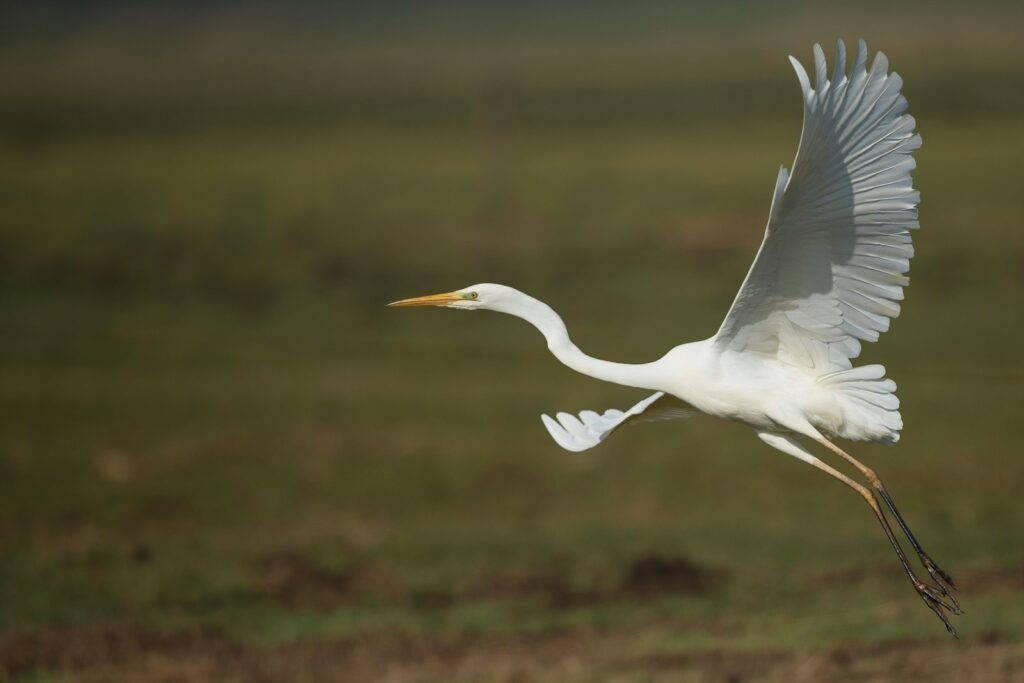
To understand how birds can fly without flapping, we must first grasp the fundamental physics involved. When a bird flies, it must overcome gravity’s downward pull by generating lift through its wings. During conventional flapping flight, birds create this lift by pushing air downward, but this requires considerable energy expenditure. In contrast, soaring flight takes advantage of naturally occurring upward-moving air currents that provide the necessary lift without the bird expending energy. These air movements come in various forms—thermals, ridge lift, wave lift, and convergence zones—each created by different environmental conditions. By positioning themselves strategically within these currents, birds effectively “ride” the air upward, gaining altitude that can later be converted to forward motion through controlled gliding. This elegant solution allows birds to travel vast distances while conserving up to 70% of the energy they would use during continuous flapping flight.
Anatomical Adaptations for Soaring
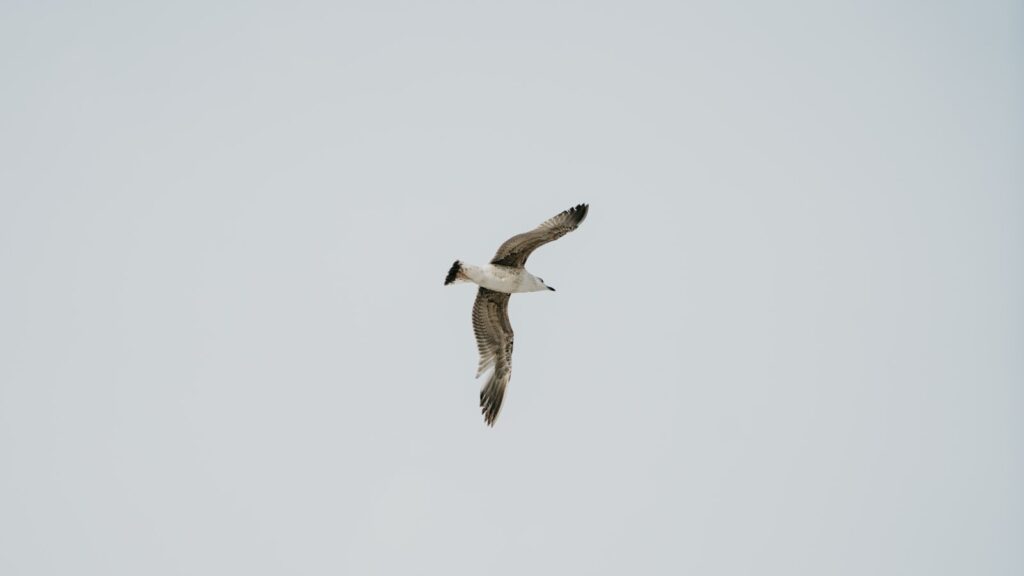
Birds that excel at soaring flight possess specific anatomical adaptations that enhance their ability to ride wind currents. Perhaps most noticeable are their wing shapes, which tend to be long, narrow, and often have splayed “fingertips” (separated primary feathers) that reduce drag and turbulence at the wingtips. Species like the wandering albatross have aspect ratios (wingspan relative to wing width) of up to 18:1, allowing them to maximize lift while minimizing energy expenditure. The tail also plays a crucial role, functioning as a rudder and stabilizer during extended glides. Additionally, soaring birds typically have specialized sensory adaptations, including highly sensitive pressure receptors in their wings that detect subtle changes in airflow, allowing for minute adjustments to maintain position within favorable currents. These adaptations work together to create a biological aircraft perfectly designed for extracting energy from moving air, enabling flight durations that would be impossible through muscle power alone.
Thermal Soaring: Rising On Nature’s Elevators
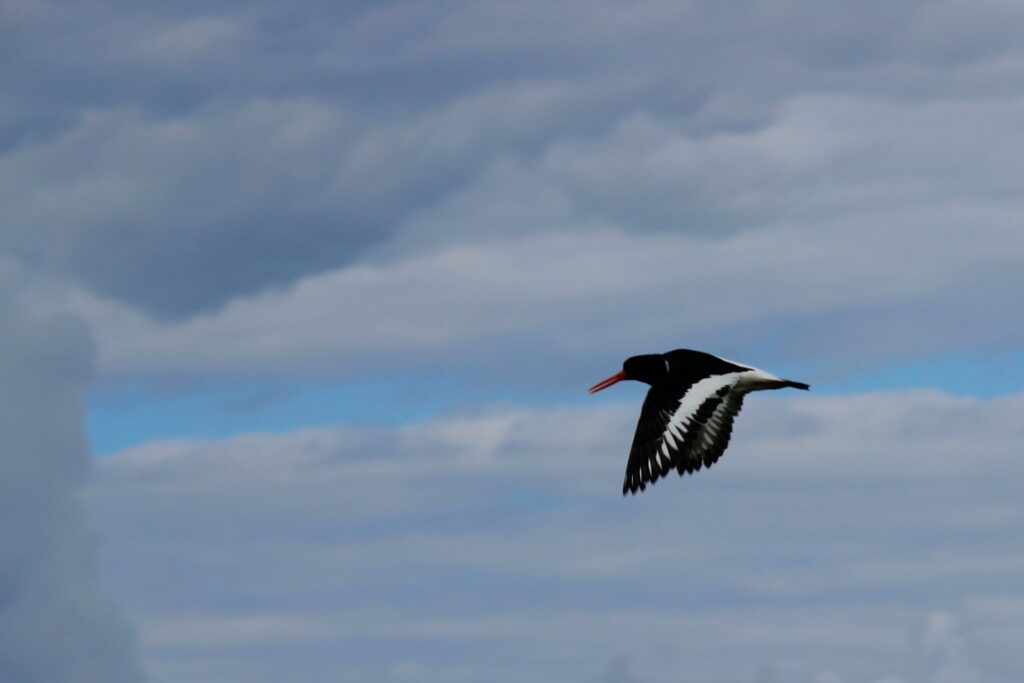
Thermal soaring represents one of the most common and efficient methods birds use to gain altitude without flapping. Thermals are columns of warm, rising air created when the sun heats the ground unevenly, causing some areas to warm faster than others. As this heated air rises, it forms invisible “bubbles” or columns that can extend thousands of feet into the atmosphere. Birds like vultures, eagles, and storks have mastered the art of locating and utilizing these thermal updrafts. When a bird encounters a thermal, it typically circles within the column of rising air, gradually gaining altitude with each revolution. The bird maintains a delicate balance between banking angle and airspeed, creating just enough lift to stay within the thermal while maximizing its climb rate. Once sufficient height is gained, the bird can glide to the next thermal, effectively creating a connect-the-dots pathway across the landscape that requires minimal flapping and energy expenditure.
Ridge Lift: Exploiting Geographical Features
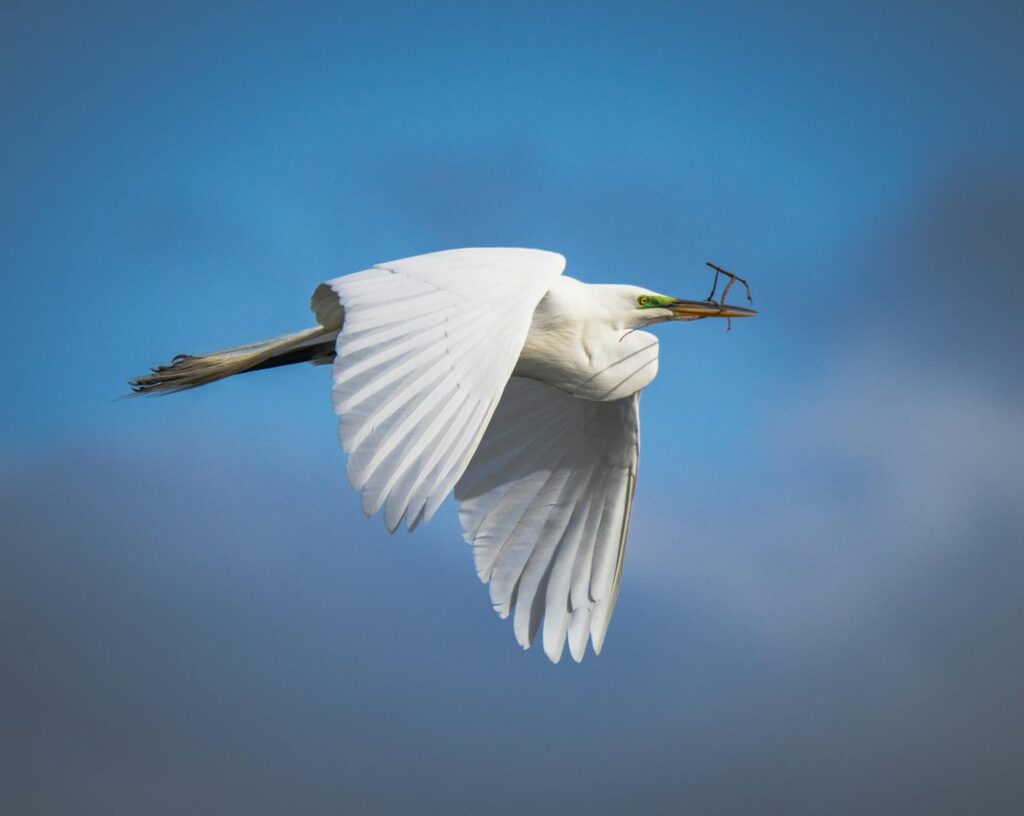
Ridge lift offers another powerful mechanism for flap-free flight, occurring when horizontal winds encounter physical barriers like mountain ranges, hills, or even large buildings. When wind hits these obstacles, it’s forced upward, creating a consistent zone of rising air along the windward side of the feature. Birds of prey and seabirds are particularly adept at exploiting this phenomenon, often flying parallel to ridgelines or coastal cliffs for hours without a single wing beat. Unlike thermal soaring, which requires circular flight patterns, ridge soaring allows for straight-line travel as long as the bird remains within the band of rising air. This technique is especially valuable during migration, as predictable ridgelines can provide reliable “highways in the sky” regardless of thermal conditions. Birds using ridge lift maintain a delicate position within the sweet spot of maximum lift, making continuous subtle adjustments to their angle and speed as the wind conditions change along the ridge.
Dynamic Soaring: The Albatross Technique
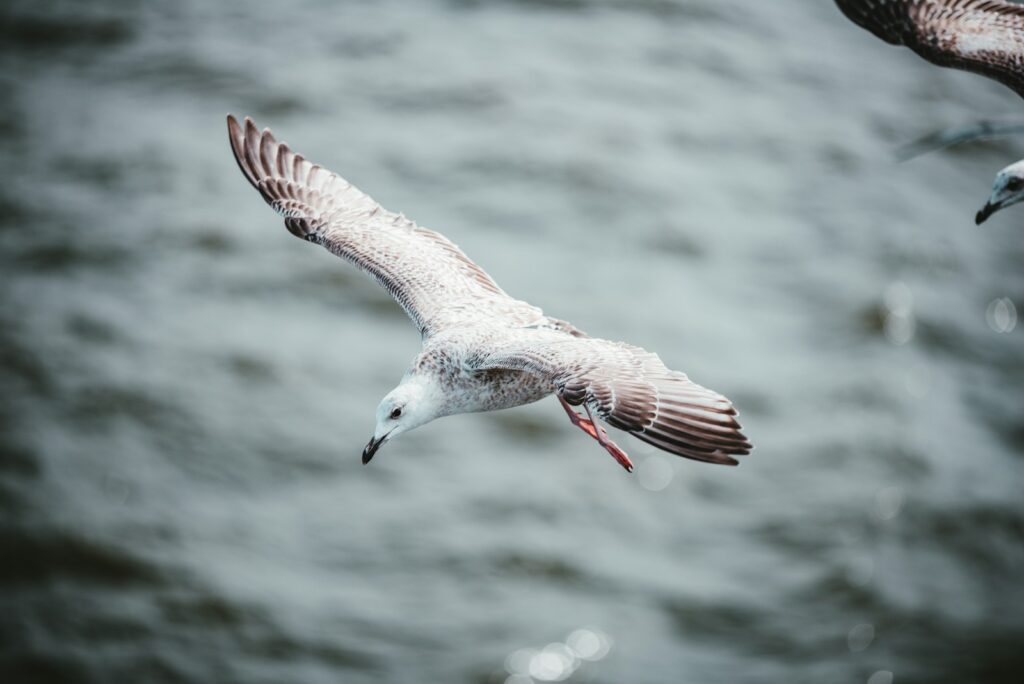
Perhaps the most sophisticated form of flap-free flight is dynamic soaring, a technique perfected by oceanic birds like albatrosses and petrels. This method exploits the wind gradient—the difference in wind speed at different heights above the water’s surface—to extract energy continuously from horizontal airflow. The process begins when a bird flies downwind and descends from a higher altitude (where winds are stronger) to just above the water’s surface (where friction reduces wind speed). As it crosses this boundary, the bird experiences a significant increase in its airspeed relative to the air mass it’s flying through. The bird then turns upwind and uses this excess speed to climb back into the faster wind layer, effectively “recharging” its energy before repeating the cycle. Through this perpetual series of ascending and descending arcs, albatrosses can maintain flight speeds of over 50 mph for days or even weeks without flapping their wings. This remarkable technique allows wandering albatrosses to circle the entire Southern Ocean, covering thousands of miles while barely engaging their flight muscles.
Wave Lift: Surfing Atmospheric Waves
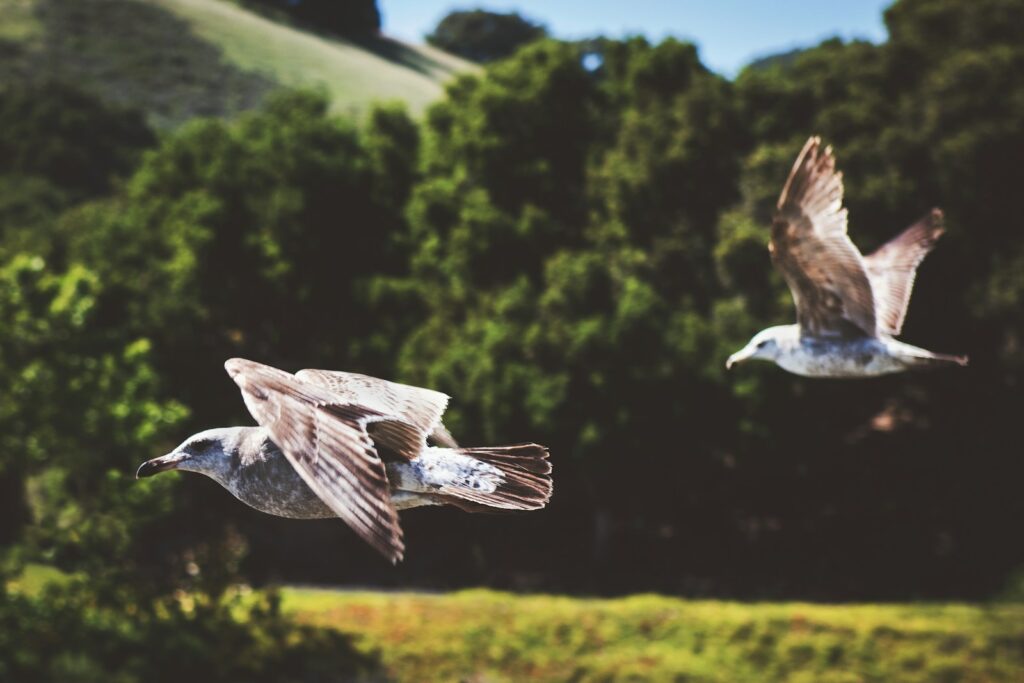
Wave lift represents one of the most powerful yet least visible forms of atmospheric energy that birds exploit for flap-free flight. These invisible waves form on the lee side of mountain ranges when strong, stable winds flow perpendicular to the ridgeline, creating a series of standing waves downwind that can extend for hundreds of miles and reach altitudes of over 40,000 feet. Eagles, hawks, and other soaring birds can ride these mountain waves much like surfers ride ocean waves, maintaining position within the upward-moving portion of the wave to gain tremendous altitude with no flapping required. The lift in these waves can be extraordinarily powerful, with upward velocities sometimes exceeding 2,000 feet per minute. Wave lift is particularly valuable because, unlike thermals, it’s not dependent on solar heating and can persist through the night or in cold conditions. Birds using wave lift often fly in a straight line parallel to the mountain range, making small adjustments to stay within the wave’s sweet spot where upward movement is strongest.
Convergence Zones: Where Air Masses Meet
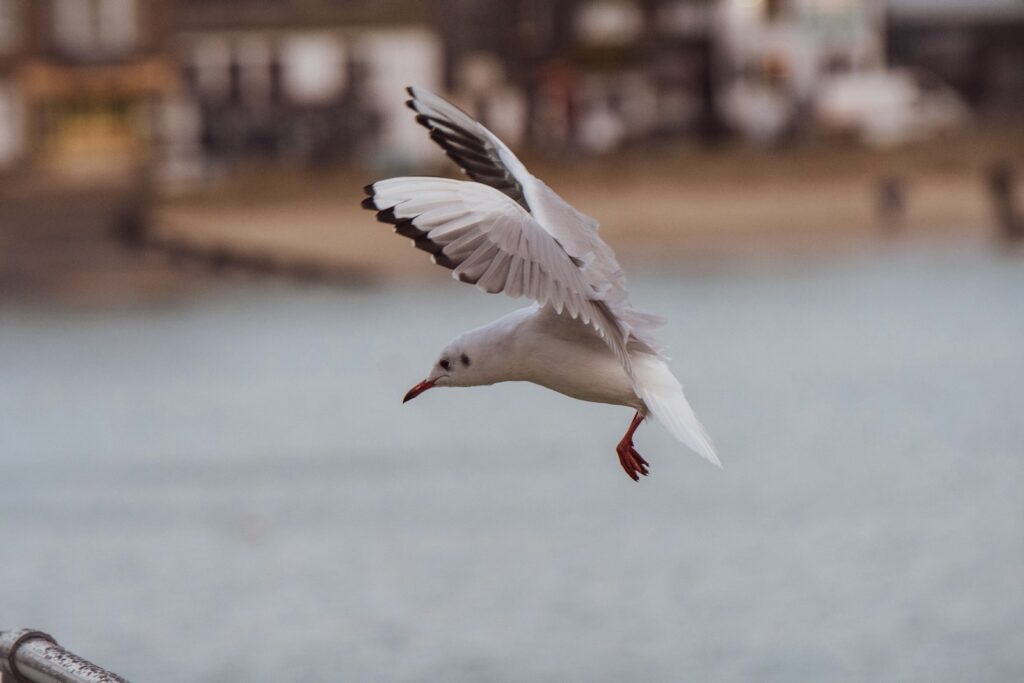
Convergence zones offer another significant opportunity for birds to achieve flap-free flight by exploiting areas where different air masses collide. These zones typically form along coastlines (where sea breezes meet land air), frontal boundaries between weather systems, or in valleys where winds from different directions are channeled together. When air masses converge, they have nowhere to go but up, creating broad areas of reliable lift that birds can utilize for sustained soaring. Seabirds are particularly adept at using coastal convergence zones, often flying parallel to shorelines for hours by remaining in the band where onshore breezes are forced upward. Unlike the relatively narrow bands of ridge lift, convergence zones can create extensive “highways” of rising air that allow for efficient long-distance travel. Birds using these zones typically maintain a straight flight path within the area of maximum lift, making subtle adjustments to their position as the convergence zone shifts with changing wind conditions or coastal geography.
Gust Soaring: Exploiting Wind Variability
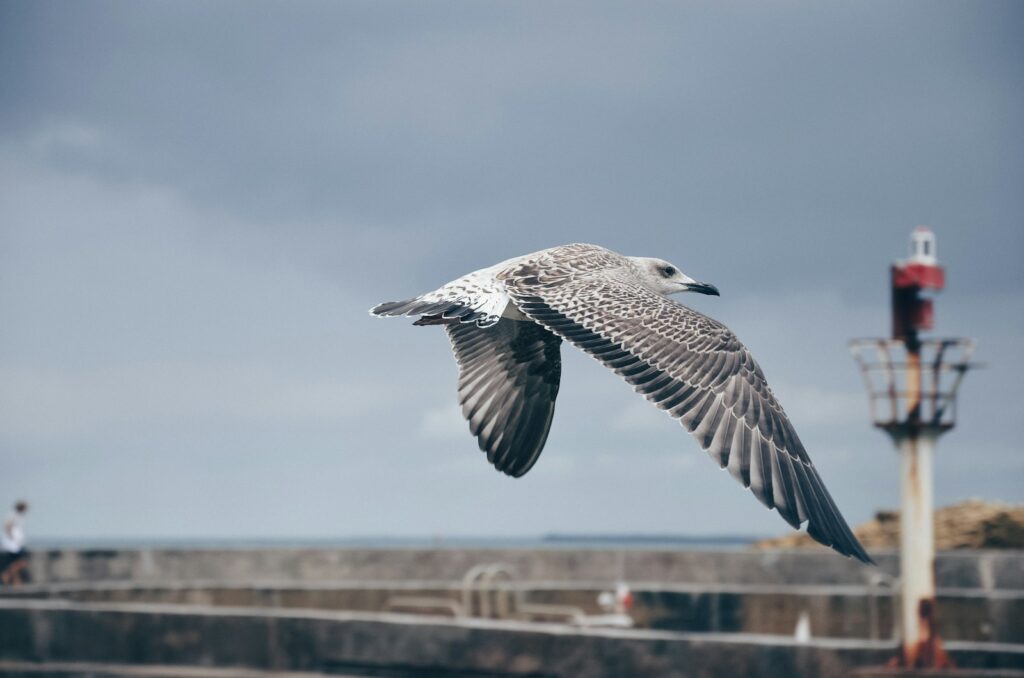
Gust soaring represents one of the most opportunistic techniques birds use to extract energy from unstable air conditions. This method relies on a bird’s ability to sense and react to rapid changes in wind speed and direction—essentially “catching” gusts to gain momentary lift. Species that excel at this technique, such as gulls and kites, have highly responsive flight controls and exceptional sensitivity to changes in air pressure across their wings. When a gust approaches, these birds quickly adjust their wing position to maximize the lifting effect, effectively converting the horizontal energy of the gust into vertical lift. This technique is particularly valuable in turbulent environments like coastal areas or during stormy conditions when more structured forms of lift may be disrupted. Gust soaring requires lightning-fast reactions and a deep, intuitive understanding of fluid dynamics, as the bird must constantly read the air and make split-second adjustments to maintain control while extracting maximum energy from each fluctuation in the wind.
Energy Conservation: The Ultimate Goal
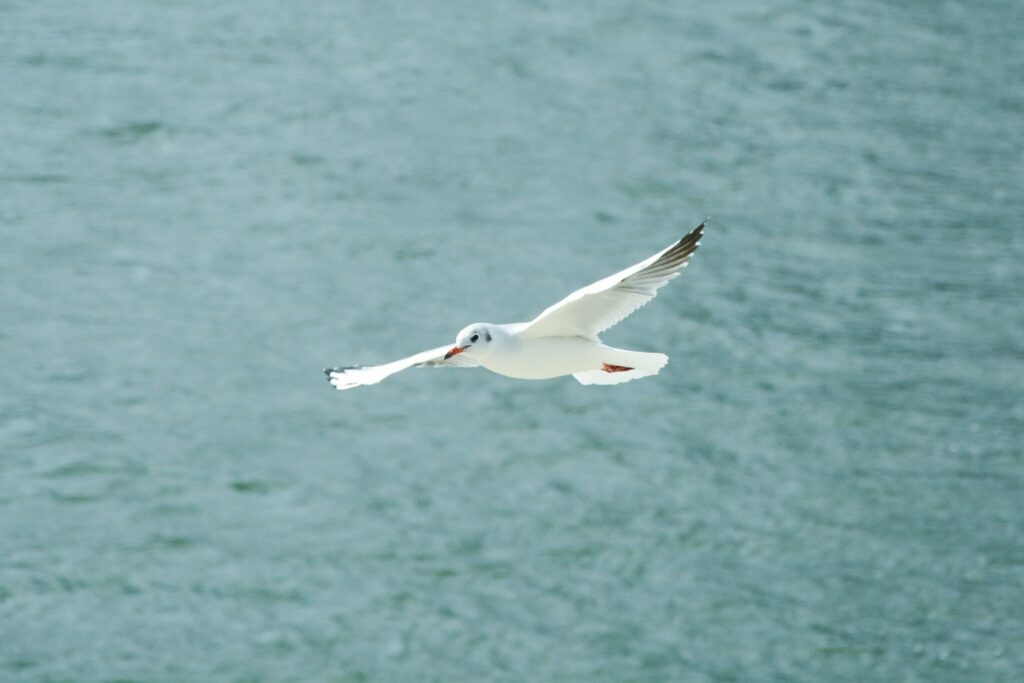
Energy conservation forms the fundamental driving force behind birds’ sophisticated soaring behaviors. Flight is metabolically expensive, with flapping flight requiring up to 20 times the energy expenditure of rest. By mastering the art of soaring, birds create an energy budget that makes long-distance travel not just possible but sustainable. The energy savings are staggering—a wandering albatross using dynamic soaring can reduce its flight costs by up to 90% compared to continuous flapping, allowing it to search vast oceanic areas for scattered food resources. This efficiency proves particularly crucial during migration, when birds must travel thousands of miles while maintaining sufficient energy reserves for reproduction upon arrival. The biological imperative for energy conservation has driven the evolution of increasingly sophisticated soaring techniques across different bird families, with convergent adaptations appearing independently in species facing similar ecological challenges. By effectively outsourcing the energy requirements for flight to environmental sources, soaring birds represent one of nature’s most elegant solutions to the problem of efficient long-distance travel.
Sensory Systems: Feeling the Air
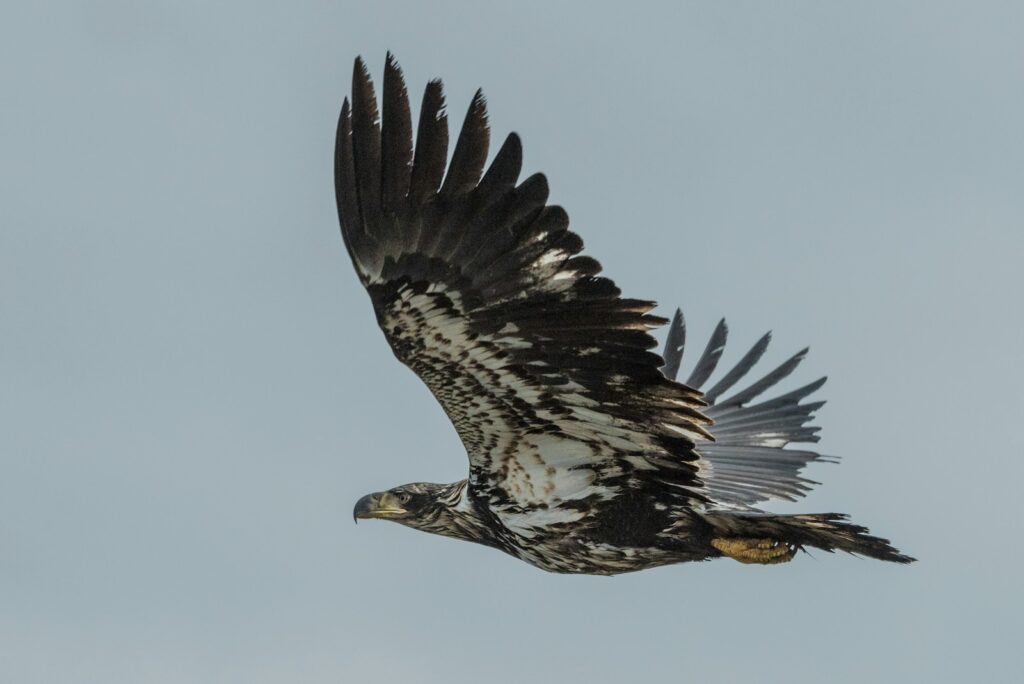
The remarkable ability of birds to soar efficiently relies heavily on sophisticated sensory systems that allow them to “read” invisible air movements with extraordinary precision. Unlike human pilots who rely on instruments, birds possess specialized mechanoreceptors embedded in their feathers that continuously detect minute changes in air pressure, speed, and direction across their flight surfaces. These receptors, particularly concentrated along the leading edge of the wing, send constant feedback to the bird’s nervous system, enabling instantaneous adjustments to wing shape, angle, and position. Additionally, many soaring species have enhanced vestibular systems that provide exceptional balance and spatial awareness, allowing them to maintain optimal soaring positions even in turbulent conditions. Some evidence suggests that soaring birds may also detect infrasound—low-frequency sound waves produced by air moving over landscape features—helping them locate distant sources of lift. This multisensory approach to flight creates a comprehensive “air map” that allows birds to navigate the invisible landscape of air currents with an efficiency that human aviation still struggles to match.
Learning the Skills: Development of Soaring Ability

The sophisticated techniques required for efficient soaring flight aren’t entirely innate but represent a complex blend of inherited instinct and learned behavior. Young birds of soaring species undergo a critical learning period during which they develop the skills needed to master wind-based flight. In species like eagles and vultures, juveniles initially exhibit clumsy soaring attempts, requiring significantly more flapping than adults when navigating the same air conditions. Parents sometimes “demonstrate” soaring techniques, with juveniles observing and gradually refining their approach through trial and error. This learning process typically takes months, with young birds progressively developing the neural pathways and muscle memory required for efficient soaring. Research has shown that juvenile birds initially struggle with thermal centering (finding the strongest core of rising air) and often fail to maintain optimal bank angles and airspeeds within lift sources. Some species form mentor-apprentice relationships, with young birds following experienced adults during migration to learn critical soaring routes and techniques. This combination of genetic predisposition and learned expertise ensures that soaring ability continues to improve throughout a bird’s early life, reaching peak efficiency typically by the second or third year.
Migration Champions: Long-Distance Soaring
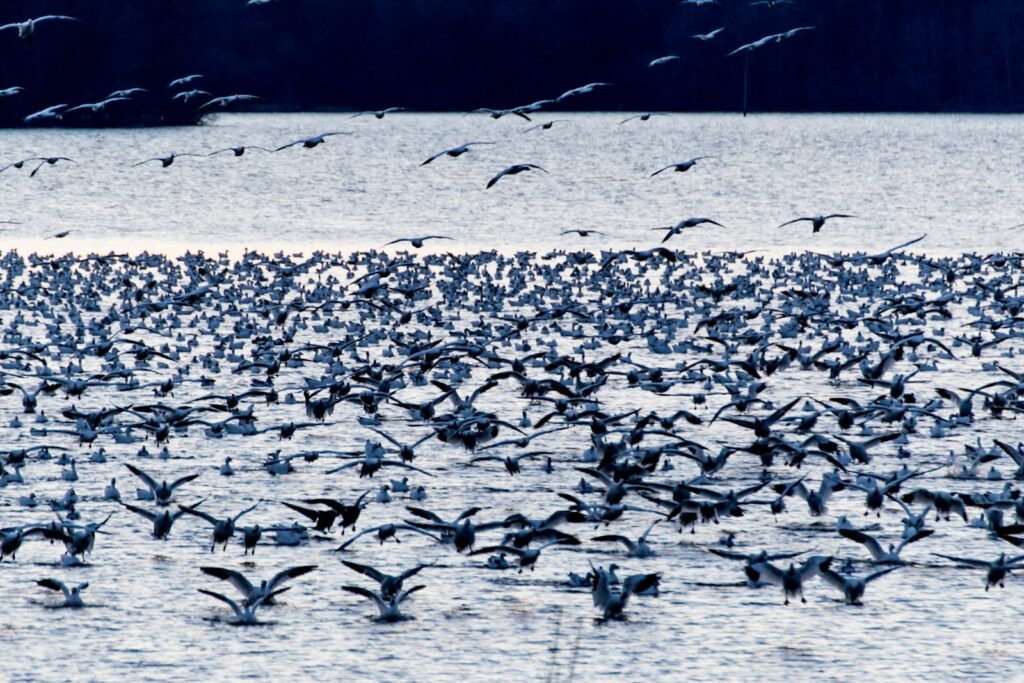
The ultimate showcase of soaring excellence occurs during long-distance migration, when certain species combine multiple soaring techniques to accomplish extraordinary feats of endurance and efficiency. The European honey buzzard exemplifies this mastery, traveling over 10,000 miles annually between Europe and Africa while flapping for less than 20% of its journey. These birds begin their migration by seeking out thermal corridors, strings of predictable rising air that form along mountain ranges and valleys. When crossing barriers like the Mediterranean Sea where thermals are scarce, they switch to dynamic soaring or exploit sea breezes along coastlines. Other champions include bar-headed geese, which use wave lift to assist their passage over the Himalayas, and Arctic terns, which employ convergence zones along oceanic frontal boundaries during their pole-to-pole migrations. Most remarkably, juvenile soaring birds like golden eagles can successfully navigate these complex journeys on their first migration without adult guidance, suggesting a deep genetic programming for recognizing and utilizing specific types of lift. These migration specialists demonstrate the evolutionary pinnacle of energy-efficient travel, having refined their soaring abilities to solve the immense challenge of seasonal movement across thousands of miles of varied terrain.
Human Applications: Learning from Avian Masters
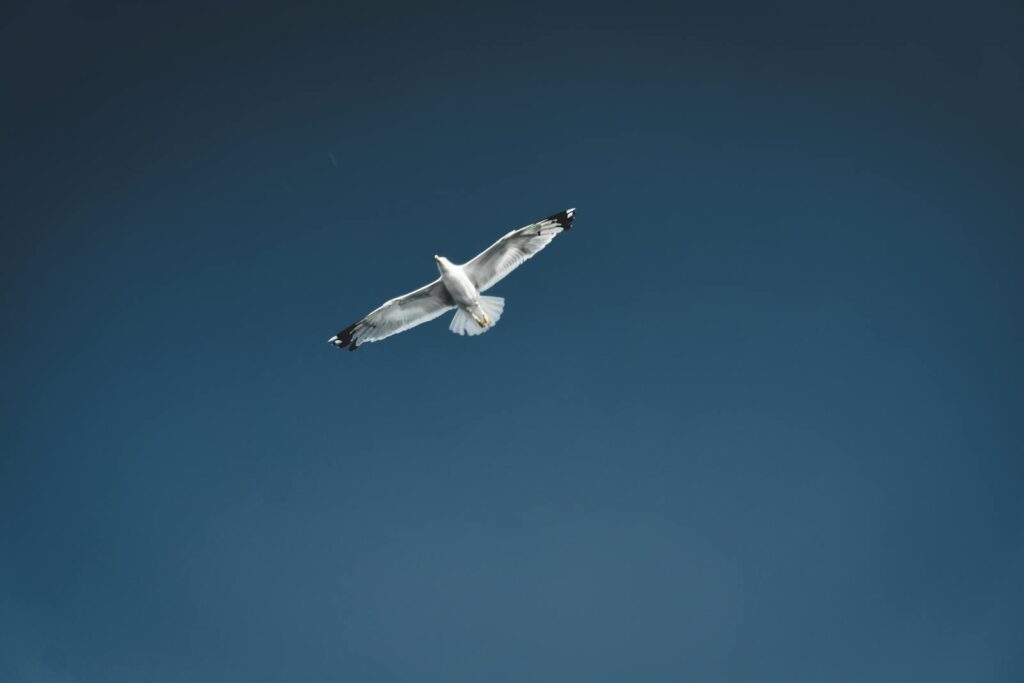
The extraordinary soaring abilities of birds have long inspired human aviation, with modern applications extending far beyond the initial mimicry of wing shapes. Today’s glider pilots directly employ the same soaring techniques birds use, circling in thermals and riding ridge lift to stay aloft for hours without engines. More cutting-edge applications include the development of dynamic soaring algorithms for autonomous drones, potentially allowing continuous flight without battery recharging by extracting energy from wind gradients just as albatrosses do. Engineers studying bird flight have created micro air vehicles with pressure-sensitive “feathers” that provide real-time aerodynamic feedback, mimicking the sensory capabilities that make avian soaring so efficient. Perhaps most significantly, research into how birds locate and utilize invisible air movements has led to improved weather prediction models and more efficient commercial flight routing that reduces fuel consumption by identifying favorable winds. As renewable energy becomes increasingly important, understanding how birds extract energy from moving air has informed the design and placement of wind turbines to maximize generation potential. Through this ongoing biomimicry, birds continue to serve as the ultimate teachers for efficient flight, with their four-hundred-million-year evolutionary head start providing solutions to challenges human technology is only beginning to address.
Conclusion

The remarkable ability of birds to fly without flapping stands as one of nature’s most elegant engineering solutions. Through millions of years of evolution, birds have developed sophisticated anatomical adaptations and behavioral strategies that allow them to extract energy from the atmosphere with astonishing efficiency. From the thermal-riding vulture to the wave-surfing albatross, each species has refined its approach to match its specific ecological niche and flight requirements. As human technology continues to advance, we increasingly turn to these avian masters for inspiration, recognizing that the sustainable flight solutions we seek have already been perfected in the wings of birds soaring effortlessly above us. Their mastery of invisible air currents not only enables their own remarkable journeys but also points the way toward more efficient and sustainable human flight in the future.
